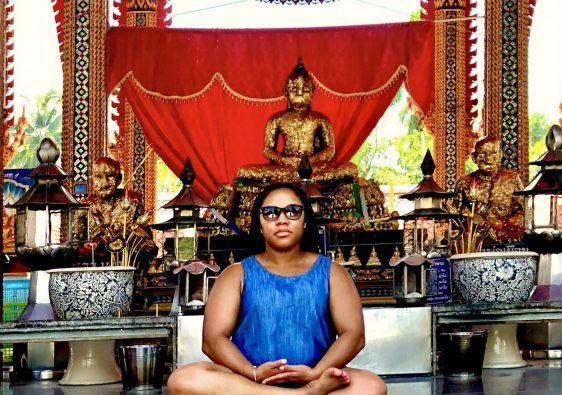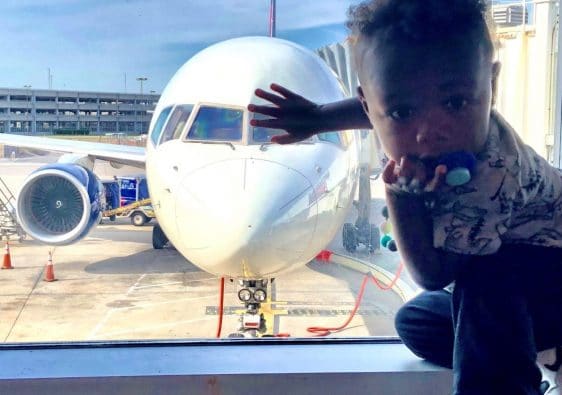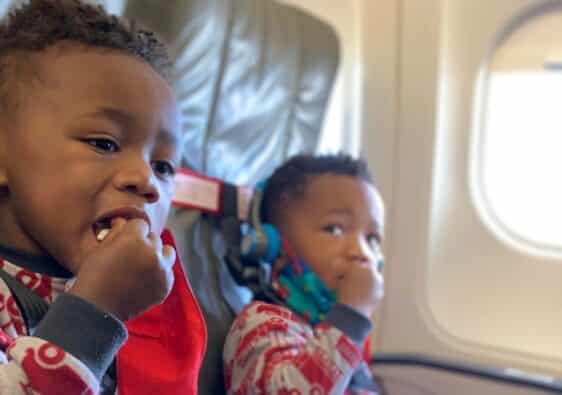Traveling with a newborn might sound intimidating—add in two babies under one, and it sounds downright impossible, right? Trust me, I’ve been there. Before my twin boys turned one, we had already taken them on over five trips—including flights to Puerto Rico, Amsterdam, and Paris. So yes, it’s possible—and no, you don’t have to wait until they’re older to make unforgettable family memories.
In this post, I’m sharing everything I’ve learned from flying with newborns and babies during that precious (and chaotic) first year. From deciding whether to book a seat to what to pack, how to handle security with bottles and breastmilk, and how to survive blowouts at 30,000 feet—I’ve got you covered. Whether you’re planning baby’s first trip or just curious what traveling with a six-month-old looks like, I’ll walk you through it all.
Because the truth is: travel doesn’t stop when you become a parent. You just learn how to do it differently—and smarter.
How Early Can You Fly with a Newborn?
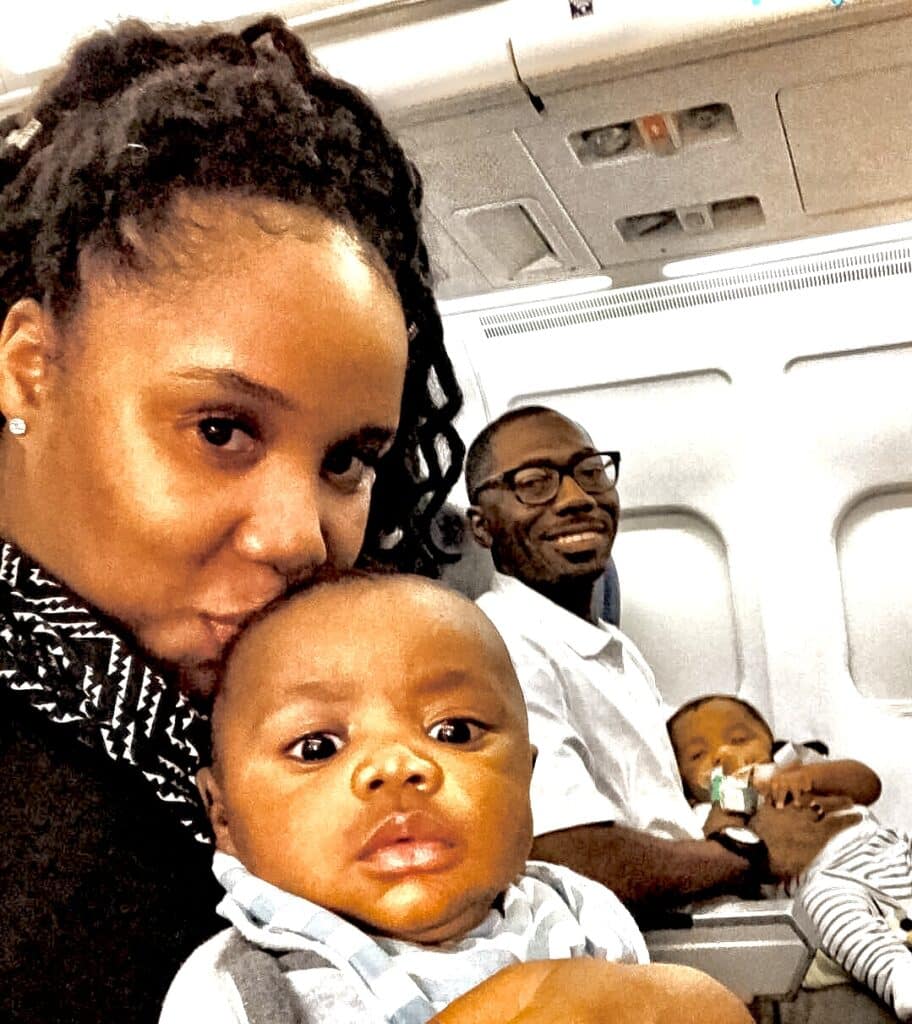

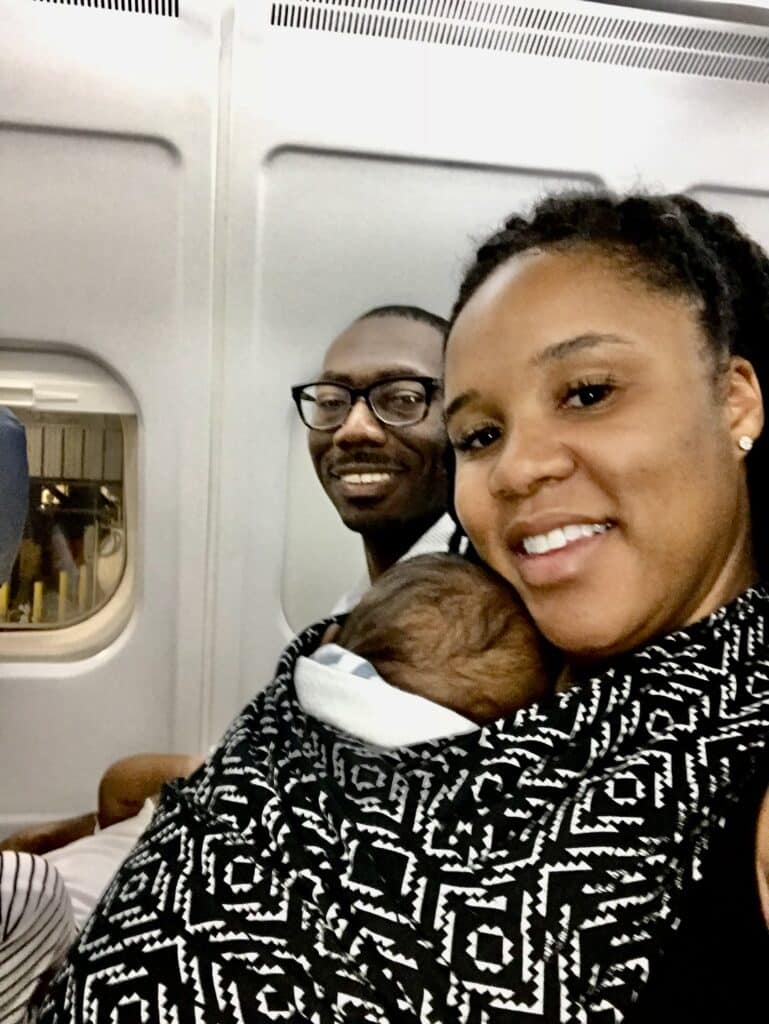
One of the most common questions I hear is: “How soon can you fly with a newborn?”
While some airlines allow babies as young as 2 weeks old to fly, most pediatricians recommend waiting until your baby is around 3 months old, mainly because by then, they’ve had a few rounds of immunizations and their immune systems are stronger.
At our twins’ 3-month checkup, I asked our pediatrician when we could start flying. Her answer? “Whenever you want.” A few weeks later, we were on our first flight to visit family.
That said, I know parents who’ve flown earlier, with newborns just a few weeks old, and everything went smoothly. Every baby and every family is different.
The key takeaway: Always consult with your pediatrician. They know your baby’s health history and can help you make the best decision for your situation.
👉 For general travel health guidance for infants, check out this CDC travel page on infant safety 👈
Where Can You Travel with a Newborn or Baby?



If you’re wondering where you should go with your baby, especially on that first trip, my advice is simple: start with a familiar place.
Our first flight was to my hometown to visit family. That made a huge difference. The travel part still had its challenges (like figuring out what to pack), but being in a familiar environment gave us the confidence to get through it without added stress. I wasn’t worried about navigating a brand-new city or culture; I could focus on figuring out the logistics of flying with my babies.
If visiting family or a known destination isn’t an option, the next best thing is choosing a place that’s close and easy to get to. Think: short, direct flight. Somewhere you can get to in 2–3 hours max, ideally without layovers. That first trip is really about getting your feet wet, learning how your baby handles travel, and building your comfort level.
Once you’ve done that initial trip, you’ll feel way more confident and ready to start exploring further. By 6 months, my boys had already been to Amsterdam and Paris.
Booking Flights with a Newborn: When do I need to buy my baby a plane ticket
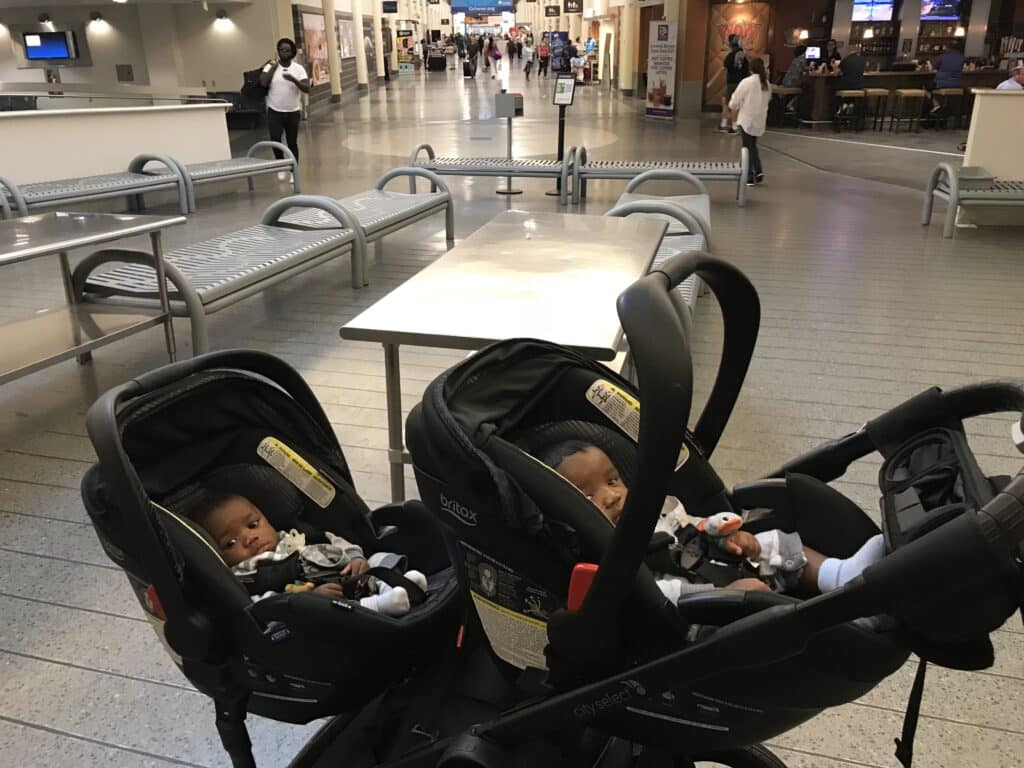
For most families, especially on domestic flights, having a baby under 2 travel as a lap child is the go-to option—and for good reason. It’s completely free on domestic routes, and while international flights aren’t fully free, the cost is typically limited to taxes and fees (a fraction of a full fare).
This is the route we usually took when flying with our twins. Honestly, my boys have never met a car seat they loved, so having them on our laps just worked better for our family. It gave us more flexibility and kept things simple, especially when we were tag-teaming travel as two adults.
That said, if you’re traveling solo with multiple babies under two, you can only have one lap child per adult. In those cases, I’d book a seat and bring a car seat onboard for the second baby.

Pro Tip: Want to use your car seat without buying a separate seat? Check how full your flight is before checking in. If the flight isn’t full, bring your car seat to the gate and ask the gate agent if there’s an empty seat next to you. If there is, they’ll often let you bring it on for free and buckle your baby in.
Another Pro Tip: If possible, book flights during your baby’s “sleepy time”, either early in the morning or late at night—whenever they usually sleep best. It increases the odds they’ll nap through the whole experience. And if your baby is sensitive to noise, baby headphones can help.
👉 Need help packing efficiently? Check out My Favorite Travel Resources & Products to see what gear helped us stay organized and stress-free 👈
🌟 Want more help planning your trip? 🌟
Grab my Traveling with Kids Encyclopedia—over 60 pages of practical tips, product recs, and real-world strategies for traveling with babies and toddlers.
Or dive into my Family Travel Tips for more advice, destination guides, and encouragement to travel your way—whether it’s just you, your baby, or the whole crew.



Getting through the airport with a baby—or two—can feel like an Olympic sport. There’s gear, bottles, bags, IDs, and maybe a stroller caravan rolling behind you. But with a little strategy, it becomes much more manageable.
We leaned heavily on SkyCap curbside check-in to make it easier. My husband would drop me off with the babies and bags, and proceed to park the car after he showed his license for check-in. It made a huge difference, especially when juggling all our stuff.
TSA Tips:
- You can’t baby-wear through security. You’ll need to take your baby out and carry them through the metal detector.
- Strollers and car seats that fit in the X-ray machine will need to go through. Larger gear, like strollers that don’t fold compactly, will be inspected manually.
- Liquids like breastmilk or pre-made bottles are allowed. TSA will have you open the bottles, and they will wave a strip above the opening to check for safety.
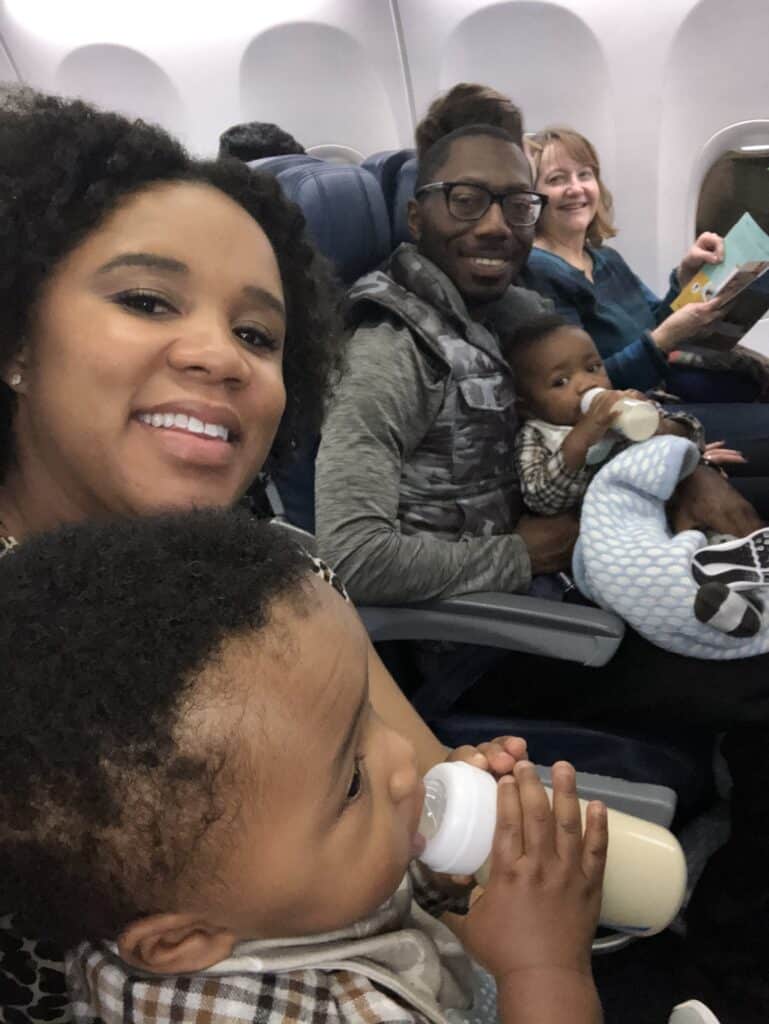
Pro Tip: Traveling with formula? Pre-scoop it into travel formula dispensers so you’re not fumbling with canisters at 6 AM. And if you’re bringing breastmilk, freeze what you don’t need immediately. Frozen breastmilk passes through security more easily, requires less testing, and stays fresher longer.
This stage is all about being mentally one step ahead. Think through what needs to come off, go on the belt, and be carried separately. The more organized you are, the faster you’ll get through—without stress-tears (from you or the baby).
🌟 Grab my Travel Day Mental Checklist—a simple, interactive guide to help you think through each step of the travel process🌟
This part can feel chaotic, especially with twins. But once we started baby-wearing, everything got easier. We wore the babies down the jet bridge, which freed our hands to fold the stroller, detach the car seats, and tuck everything into travel bags—without a crowd of passengers waiting behind us.
After 6 months, when our boys could sit up, we switched to compact travel strollers like the GB Pockit or Babyzen YOYO. They fold up small enough to fit in the overhead bin.
👉 You can find those and more on My Favorite Travel Resources & Products.
Whether you’re bringing a car seat, stroller, or just a diaper bag, know your system before boarding. If your airline offers early family boarding, take it—or wait until the crowd clears if you prefer space to breathe.
In-Flight Tips
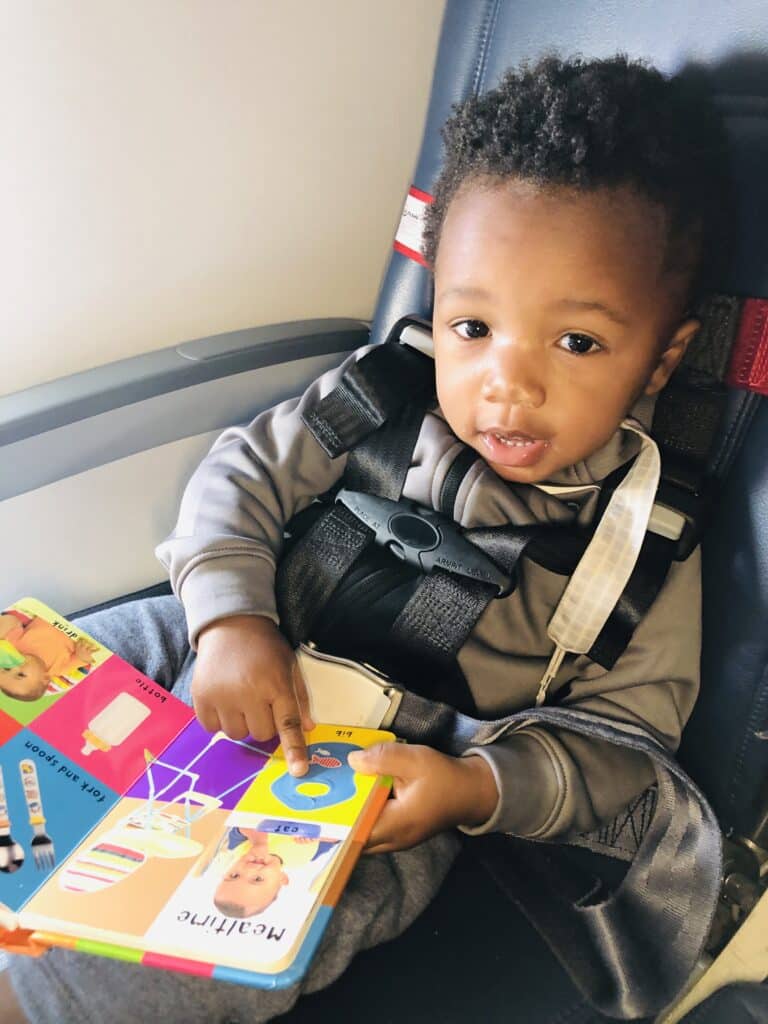


For the most part, newborns are great fliers. If they’re fed and snuggled, they usually sleep. The key moment? Takeoff and landing. That cabin pressure can hurt little ears.
Feed or offer a pacifier during those moments to help ease the pressure. If they’re not hungry, even sucking on a paci helps.
Once they’re older (6–12 months) and more active, you’ll want:
These are lightweight, compact, and mess-free.
👉 Want more ideas? 👈
Here’s my 25+ Travel Essentials Checklist to keep little ones entertained.
👉 Prefer to select a customizable, age-appropriate travel kit? 👈
Check out Mini Voyager. My boys LOVED these kits
Handling Diaper Changes and Emergencies

Yes, there will be poop. To this day, I’m not sure why, but the first few flights we took meant one of the boys was going to have a blowout 😳
To make life easier, I packed individual diaper-change kits:
- Diapers
- Wipes
- Change of clothes
- Puppy pad
- Ziplock bag
Before boarding the plane, we would change their diapers to minimize the likelihood that we would have to do so on the plane. The good news is that most airplanes have at least one bathroom with a changing table. You may want to double-check when boarding the plane so you don’t have to do so when there’s a potty emergency.
Pro Tip: Always bring a change of clothes for both you and the baby. Babies are notorious for sharing their bodily fluids at the worst times, so you don’t want to be caught unprepared.
Arrival and Accommodations

Once you land, your next focus is where baby will sleep.
Call ahead to see if your hotel provides cribs or Pack ‘n Plays. If not, bring a portable crib or sleeping pod.
👉 I rounded up the best options in my Ultimate Portable Bed Guide 👈
When it comes to airport-to-hotel transportation, we chose to bring our own car seats. It was what made us feel most comfortable, but choose what works best for you.
International Travel Considerations
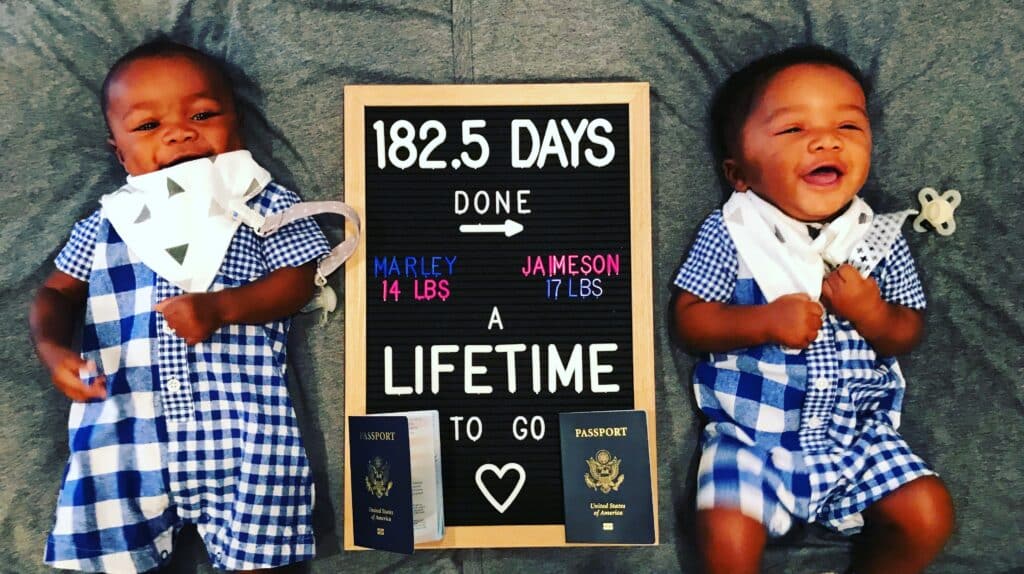
Babies need passports too! You’ll need to apply in person and:
- Both parents must be present to sign the application
- An appointment is required
- You’ll need a passport photo and birth certificate
- Do note that the passport photo needs a wh ite backdrop and no other person (or shadow) can be included.
- Pro Tip: If you want to take your own photos, lay a white cloth in the car seat and take baby’s photo while they’re sitting in there
👉 Everything you need is right here on the State Department’s site 👈
For international flights, even if you’re using the lap child option, you’ll still pay taxes, fees, and sometimes a small fraction of a regular ticket. The great news, it’s significantly less! Also, be sure to call the airline or use the “infant in arms” or “lap child” option when booking online.

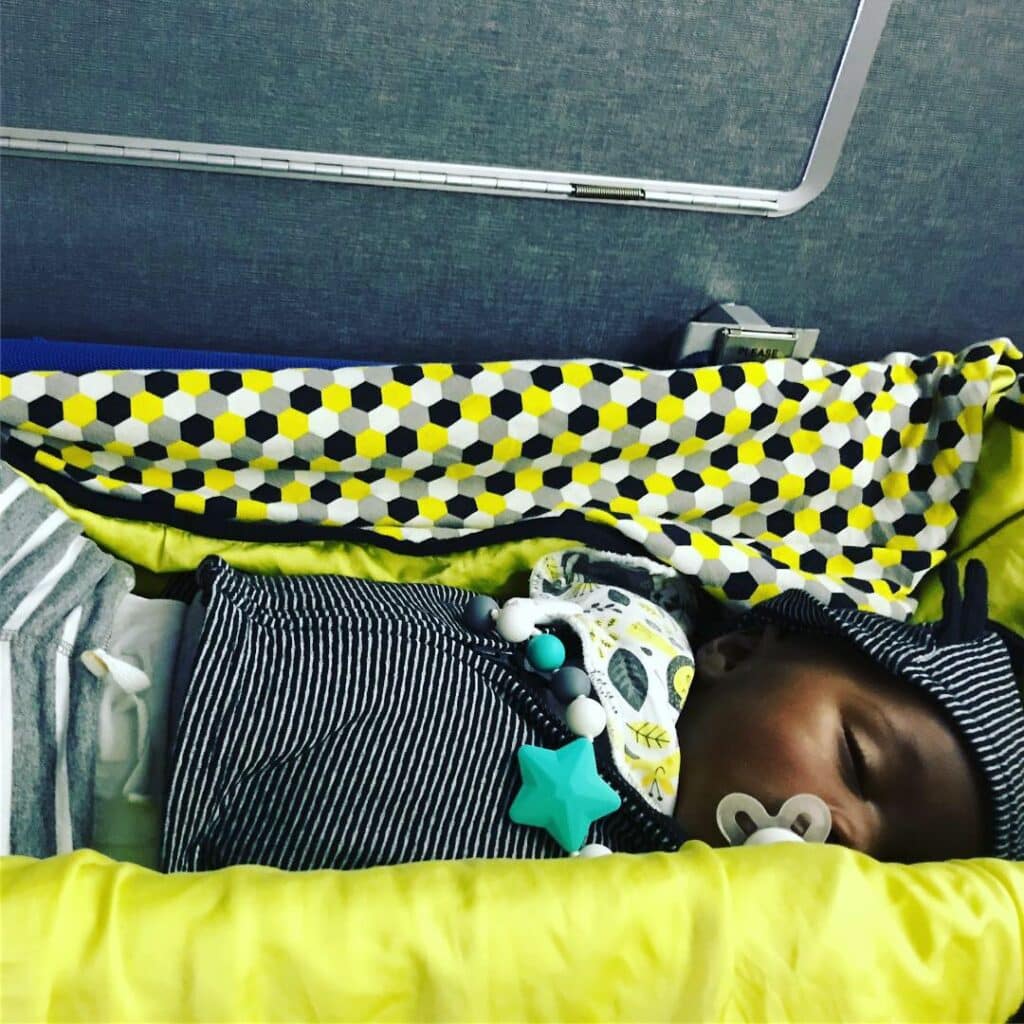

Want a baby bassinet? Booked the flight as early as possible to increase the likelihood of the bulkhead seats being available, as some allow you to attach a baby bassinet. An airplane bassinet is a small, cradle-like bed that hooks onto the wall in front of your seat, perfect for letting your baby sleep safely during long-haul flights. Most bassinets are suitable for babies up to around 20–22 pounds (9–10 kg) or until your baby can push up or roll over. Not all bulkheads allow bassinets, so I always call the airline to confirm before choosing my seat.
At immigration, your baby will go through customs like you do. If you’re traveling without the other parent, don’t be surprised if they ask about the other parent. This only happened to me once, but don’t be surprised.
Conclusion


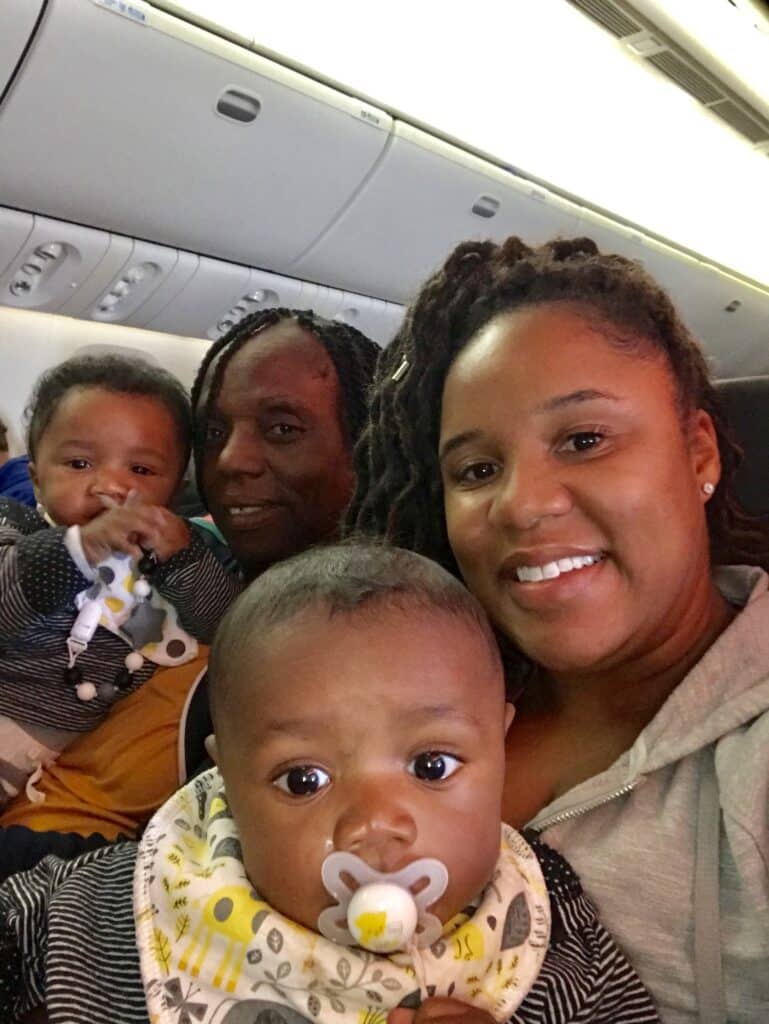
Traveling with a newborn might seem daunting, but once you do it, you’ll wonder why you waited. Babies are adaptable. They sleep often. And traveling early teaches you how to be confident when traveling with kids.
Whether it’s your first domestic trip or your baby’s first passport stamp, I hope these tips make your journey smoother, less stressful, and a whole lot more fun.
⭐ More Tips on Traveling with Baby and Toddlers ⭐
Getting Through Airport Security With Baby: Step-by-Step Guide
Can I Travel Internationally With Kids? What Parents Need to Know
Traveling with a Newborn: Tips for Flying During Baby’s First Year
CARES Harness vs. Car Seat for Flying with Kids: What’s Best for Your Family?
Traveling With Kids: Biggest Challenges + Smart Fixes
What’s the Best Age to Travel With Kids? Real Talk for Moms
Pros and Cons of Traveling with Kids (By Age Group)
A Complete Guide to the Best Toddler Airplane Beds
25+ Toddler Travel Essentials: Traveling with a Toddler Checklist
Best Toddler Travel Beds- Ultimate Kid Portable Bed Guide
15 Tips to Help a Toddler Sleep on the Plane
21 Tips for Flying with Toddlers From a Traveling Mom
27 Beach Essentials for Toddlers and Babies


